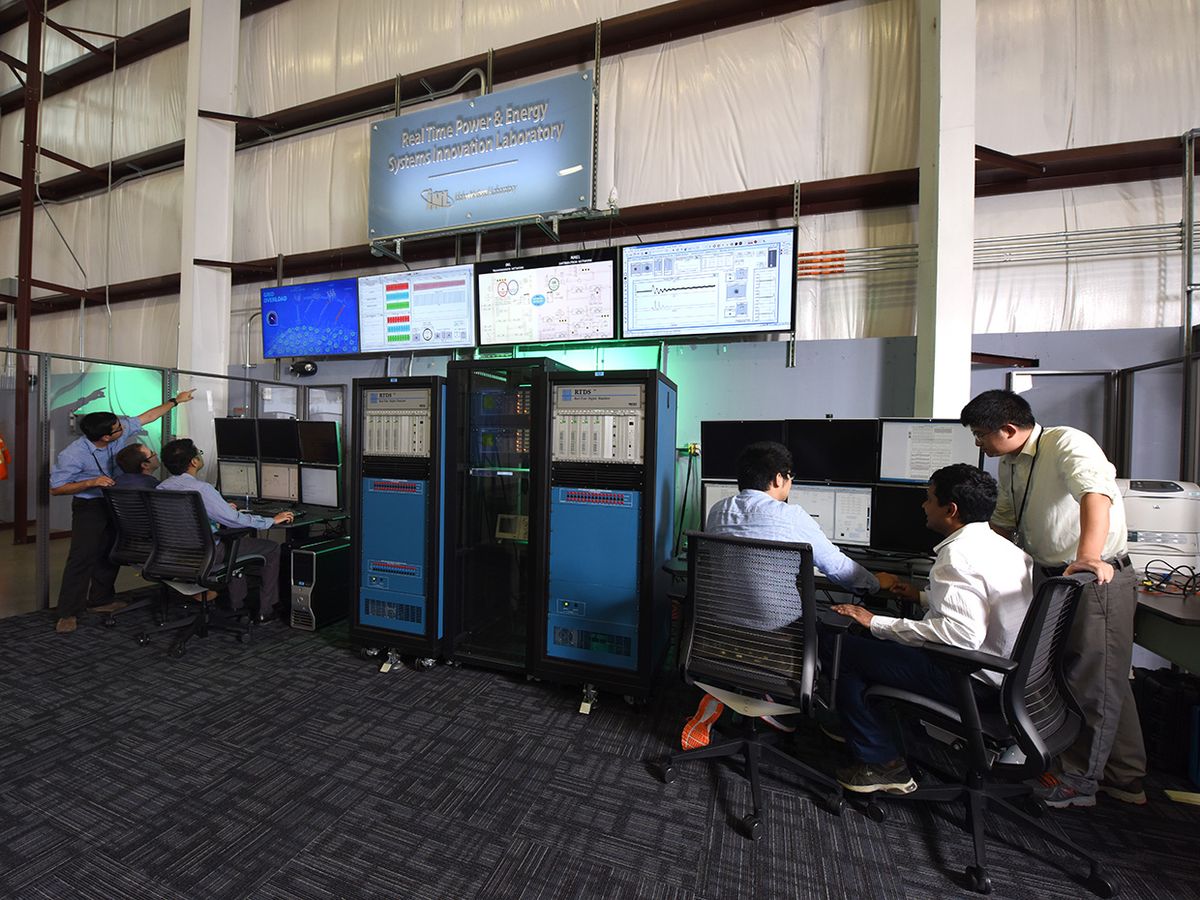After this year’s series of hurricanes, an electric grid–focused experiment carried out in late September by research laboratories in the United States and Europe may prove especially timely.
It’s no stretch to imagine a hurricane cutting electric power across a wide swath of the United States, upsetting grid stability. The researchers wondered: Would be possible to stabilize the grid in such a situation using a high voltage direct current (HVDC) line reaching between the U.S. and, say, Europe, allowing grid operators to tap into excess generating capacity?
More to the point of the late September test, the researchers wanted to learn whether multiple systems on different continents could work simultaneously to balance the grid after a simulated disruption?
The answer is yes, but with a few qualifications.
The Energy Department’s Idaho National Laboratory (INL) led the international team in testing what is known as the Real-Time Super Lab. The concept is integral to an effort to learn how electricity can be rerouted across vast distances to rapidly stabilize grids after a disruption.
The team envisions that large-scale blackouts could one day be prevented by moving electricity intercontinentally. The concept mirrors the way utilities already move power regionally.
To be sure, grid connections already exist between the U.S. and Canada, mainland Europe and Norway, and increasingly across Southeast Asia, says Rob Hovsapian, manager of the Power and Energy Systems Group at INL. What’s different in the RT Super Lab is the ability to move electrons across oceans as a result of powerful computing tools working simultaneously to respond to demand and supply signals.
The effort builds on work involving INL and the National Renewable Energy Laboratory (NREL). In 2015, the two national labs successfully demonstrated the ability to connect grid simulations for real-time interaction over the Internet.
Both INL’s Power and Energy Real-Time Laboratory and NREL’s Energy Systems Integration Facility have the capability to merge computer-based simulations of the power grid with actual hardware such as wind turbines, solar inverters, batteries, and electric vehicles—a capability called “power hardware in the loop.” Researchers at Sandia National Laboratories and five universities, two of them in Europe, joined in on September’s experiment to explore how electrons can be sent around the world the same way that digital packets of zeros and ones move over the Internet.
“This is more than computers talking to each other,” says Hovsapian.
Leveraging assets and expertise at other national labs and academic institutions, the RT Super Lab concept brings more assets into the mix. Participants contributed specific capabilities:
- Sandia National Laboratories’ Distributed Energy Technologies Laboratory
- Colorado State University’s high-performance computer-based energy management system
- Washington State University’s Smart Grid and Microgrid Laboratory
- University of South Carolina College of Engineering and Computing’s InteGraL: Integrated Grids Laboratory
- RWTH Aachen University’s co-simulation framework
- Polytechnic University of Turin’s high-performance computer-based Energy Management System
- NREL’s Energy Systems Integration Facility
- INL’s Power and Energy Real-Time Laboratory
In addition, NREL used real-time grid-connected electricity generated by its wind farm, and actual power converters were used by researchers at Sandia and the University of South Carolina.
The Wide Area Network demonstrations that took place between INL and NREL in 2015 showed that most data packets took less than 17 milliseconds to travel from point to point. To mitigate data latency issues (like those that create cellphone echoes and delays), researchers in this most recent set of tests used advanced methods from the fields of signal processing, filtering theory, and data compression.
Latency issues remain, so the researchers hope to tap into the Energy Department Energy Sciences Network (ESnet), which is a high-performance, unclassified network built to support scientific research. Funded by DOE’s Office of Science, ESnet provides services to more than 40 DOE research sites, including the entire national laboratory system, its supercomputing facilities, and its major scientific instruments. ESnet carries around 20 petabytes of data monthly.
The September experiment demonstrated that widely dispersed computing assets can indeed simultaneously solve a grid stability problem. The research now can advance to consider additional “what if” scenarios involving energy storage devices, renewable energy resources, and hydroelectric generating capacity.
More research needs to be completed before the idea of intercontinental grid management can be handed over the utilities and governments for implementation.
“It’s always easier and cheaper to transfer electrons than fuels,” Hovsapian says.Contributing Editor David Wagman has been covering energy issues for three decades, focusing on all forms of electric power generation, regulation, and business models. He is particularly interested in the ongoing electrification of advanced economies and the effects that distributed generating resources could have on efforts to decarbonize national grids. Wagman, who is based in Colorado, is currently editorial director for IEEE Engineering 360, a search engine and information resource for the engineering, industrial, and technical communities.



